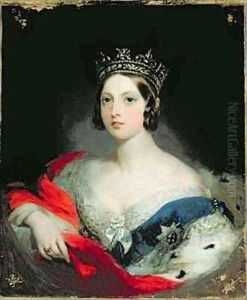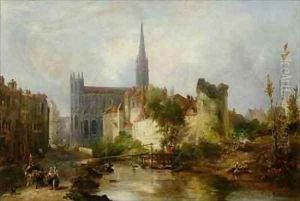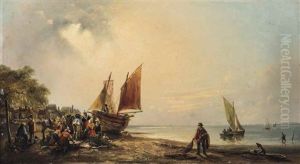William Fowler Paintings
William Fowler was an English artist and antiquary, best known for his detailed drawings and engravings of ancient buildings, monuments, and Roman pavements. Born in Winterton, Lincolnshire, in 1761, Fowler showed an early interest in the local history and ancient artifacts of his region. This fascination would guide his career and contribute significantly to the field of antiquarian studies in England.
Fowler was not just an artist but also a skilled engraver, which allowed him to meticulously reproduce his drawings for a wider audience. He embarked on various travels across England to document ancient sites, including Roman villas, medieval churches, and particularly noted for his work on Roman mosaics. His engravings were remarkable for their accuracy and attention to detail, making significant contributions to the study of British archaeology at a time when such endeavors were in their infancy.
Throughout his life, Fowler remained dedicated to the preservation and documentation of Britain's ancient past. His works were published in a series of volumes that found an audience among scholars and the burgeoning class of antiquarian enthusiasts in the late 18th and early 19th centuries. He operated from his residence in Winterton, where he also took up the position of parish clerk, integrating his life's work with his community responsibilities.
William Fowler died in 1832, but his legacy endured through his detailed engravings and drawings. These works not only serve as valuable historical records but also as a testament to his skill and dedication as an artist and antiquary. Fowler's contributions helped lay the groundwork for future archaeological studies in Britain, ensuring his place in the annals of British art and archaeological history.


